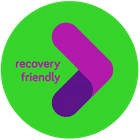Heroin addiction is a devastating condition that inflicts grievous harm on the addict and those around them. Not only is it one of the most addictive drugs, but it is also one of the most detrimental. Heroin, also known as diamorphine, is a powerful opiate made from morphine, which comes from the pod of the poppy flower, a naturally growing plant found mainly in central Asia.
Heroin addiction can arise from just one brush with the drug. It produces a powerful euphoric effect and a feeling of warmth and serenity. The experience is so potent that one in four people who try it will become addicted. This high addiction rate is just one reason GateHouse Treatment wanted to provide a more comprehensive history of heroin addiction and its dangers.
1. The History of Heroin Addiction
Heroin, as we know it today, was created by German chemist Felix Hoffman, who was also the inventor of aspirin. The pharmaceutical company Bayer gave it the brand name Heroin, after the Greek word heros, and began selling it over the counter. The idea was to make a less addictive, less potent form of morphine. In the 18th century, morphine addiction was an ironic problem, recommended to treat opium addiction.
Instead of creating a less potent drug, heroin turned out to be twice as potent as morphine, even while being promoted as a non-addictive substitute for cough suppression. Doctors and advertisers recommended heroin to parents as the new bronchitis treatment for children. It took 20 years for the drug to be regulated and banned. By then, it had already done its damage, particularly in New York’s music and society scenes, where it experienced immense popularity.
2. How Heroin Is Taken
Heroin can come in powder form or liquid form. It can be smoked, snorted, or mixed with water and injected into the veins, a common visual associated with heroin addiction. Depending on the area of the world it is produced, it will have a different color, chemical makeup, weight, and purity.
- White Heroin is assumed to be the purest, but this is a myth. Dealers often mix white heroin with other substances, including starch, sugar, and the highly dangerous fentanyl. This mixture can lead to death from just one use.
- Brown Heroin is considered a less pure, inferior product that doesn’t dissolve very well in water, making it difficult to inject intravenously.
- Mexican Black Tar Heroin is another impure form of the substance. It is sticky to the touch and doesn’t dissolve in water. To inject black tar heroin, addicts heat it with water, often on a spoon.
If you suspect your loved one might be using, keep a close eye on the paraphernalia around their house. Syringes, pipes, aluminum foil, and spoons with sticky substances are all familiar sights. Additionally, shoelaces or rubber straps are substituted for tourniquets to expose the veins before injection. If taken with a syringe, a puncture wound will be left behind. Over time and through repeated injection, it will darken the skin and leave bruising and scarring. Users sometimes wear long-sleeved shirts, even in warm weather, to hide their heroin addiction.
Even if they inject, you might not see track marks, as there are other areas besides the arms by which to administer the drug. Some users hide their heroin addiction by injecting in easy-to-cover areas, such as around their feet. Since users can hide the physical signs of heroin addiction, it’s essential to recognize the condition from a person’s behavior.
3. Effects of Heroin Addiction
Upon taking heroin, users will feel a rush with the following short-term effects.
- Warmness in the skin
- Heaviness in extremities
- Nausea
- Vomiting
- Itching
- Dry mouth
- Slowed heart function
- Slowed breathing
- Drowsiness
- Clouded mental function
Heroin addiction produces intense dependence. The long-term effects of heroin dangers are both physical and mental. These include:
- “Nodding off,” since heroin is a sedative, addicts will continuously fall asleep and wake up as their head nods up and down
- Bacterial infection in the sites of injection
- Higher risk of contracting HIV, Hepatitis, and other blood-related diseases contracted by the use of needles
- Collapsed veins and a higher risk of blood clots
- Emotional dysregulation and decreased problem-solving abilities
- Financial troubles from the expense of continuously buying
- Weight loss and malnutrition
- Lethargy and insomnia
- Pulmonary diseases like pneumonia and tuberculosis
- Severe constipation
- Liver damage
- Reduced fertility and male impotence
- Anxiety and depression
The toll of heroin addiction is immense. By its very nature, it forces you into a vegetative state that impacts every aspect of your life and relationships. Addicts will skip work and devise excuses to dodge social interactions to stay home and continue using. As the user’s health and wallet suffer, their tolerance for the drug increases, requiring more to receive a similar high. At that point, the most dangerous aspect of heroin addiction reveals itself: overdose.
4. Heroin Addiction and Overdosing
Heroin addiction can cause opioid toxicity. Since the drug impacts areas of the brain that regulate breathing, it can lead to a complete respiratory stoppage. The user will slip into a coma, closely followed by death. These are the signs of a heroin overdose:
- Slowed breathing
- Low blood pressure
- Losing all consciousness and muscle control, “going limp”
- Pale or blueish and clammy skin from oxygen deprivation
- Vomiting
- Gurgling noises
- Pupils the size of pins
If this happens, it’s essential to get medical attention and attempt to keep the user awake by asking them questions and talking to them. If the addict is vomiting, move them to their side to avoid death by choking on their vomit. Users can ingest heroin with other substances, including with other opioids or with stimulants like cocaine in what is called a “speedball.” These combinations are often deadly and introduce the possibility of overdosing on more than one substance.
5. Heroin Addiction and Withdrawal
Heroin addiction is habit-forming and produces powerful physiological and mental dependency. The brain of an addict becomes used to abnormal levels of endorphins and has an adverse reaction when deprived. The withdrawal process is long and complicated and requires supervision and support. Heroin addiction withdrawal starts from eight to 24 hours after the last dose. The short-term effects are as follows:
- Fast pulse, breathing, and blood pressure
- Higher body temperature and sweating
- Muscle spasms, cramps, and pain
- Diarrhea
- Nausea and vomiting
- Goosebumps
- Bone pain
- Discharge from eyes and nose
During this time, the addict will crave heroin and often relapse if not supervised. These symptoms give way to more prolonged withdrawal effects, such as emotional dullness, depression, and cravings that may go on for months.
GateHouse Treatment and Heroin Addiction
Recovery from heroin addiction is a delicate process, best managed in a supportive space and overseen by experts who have your every need in mind. Nobody should suffer through withdrawal alone. At GateHouse Treatment, we don’t view you as a list of symptoms but as a complete person deserving compassion and dignity. We have sober homes, medication-assisted treatment, partial hospitalization programs, and other innovative forms of therapy that focus on holistic wellness.
Begin your road to a better life by calling (855) 448-3588 or contacting us through our website. We offer 24/7 assistance and are ready to help you on your path to sobriety.
- Cymbalta Withdrawal: Causes, Symptoms, And Management - October 12, 2023
- Boredom in Recovery: 5 Tips to Avoid Relapse - October 6, 2023
- Overconfidence and Rehab: Avoiding Relapse - October 4, 2023




